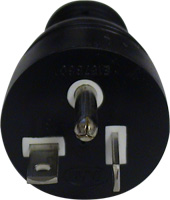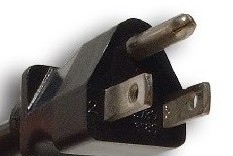I installed a new stove in my kitchen last year. I had to run new feeds because my Wife wanted a separate stovetop & oven and there were no requirements for a GFI breaker for the stove or oven. Modern code does require a 4 wire outlet with a separate neutral and ground for all new installs. They went from three wires to four wires because unlike connections like the one I made for the brew pot, the white neutral wire actually carries some current for the 120V parts like the oven light. The 4th green wire is the stove's safety ground.
If you wire your brewpot correctly the third wire (the green wire) is also the safety ground. The metal pot will be bonded to ground through the third round plug in the cord and if anything did short to the pot any current will be carried safely to ground. There is no need for a GFI breaker.
You're confusing breakers with GFIs. They are different and protect different things. They are not interchangeable.
GROUNDING with a breaker protects equipment, a GFI protects the person.
The ground as you describe will give you some protection as you mentioned: If one of the HOTs shorts to anything that's grounded (like the kettle) then the breaker should trip. The equipment is protected.
Regular breakers are rated for specific current ratings and will switch off (or 'trip') if ever the rated current is exceeded on the circuit they control. The sole purpose of breakers is to protect equipment.
What isn't protected is if that current goes through you (the brewer) and then you touch something grounded, possibly something completely different grounded. All of the sudden some current (not enough to trip a breaker) will flow through the person instead of going through the proper return path (the other HOT line).
A GFI will cut power when it detects that the current going in to a circuit does not match the current coming out of the circuit. Often this imbalance (typically only a few milliamps) is caused by current leakage through the body of a person who is grounded and is accidentally touching an energized part of the circuit.
While the electrical code varies from country to country, in the United States GFIs are typically required in kitchens, bathrooms, and other places that can be wet and the National Electrical Code (NEC) requires that GFI devices intended to protect people interrupt the circuit if the leakage current exceeds a range of 4–6 mA of current (the trip setting is typically 5 mA) within 25 ms. In other places the trip setting may be as high as 10-30mA.
5mA is a lot lower than the 20-30A that the breaker switches at because even as little as 10mA can kill someone. That's 3000 times less a 30A breaker.
Like the previous poster I would also always use a GFI on a brewing pot. In the end people can do as they please but I would never tell someone that "they don't need a GFI" with a brewpot. Let them decide what level of safety they want.
Kal






